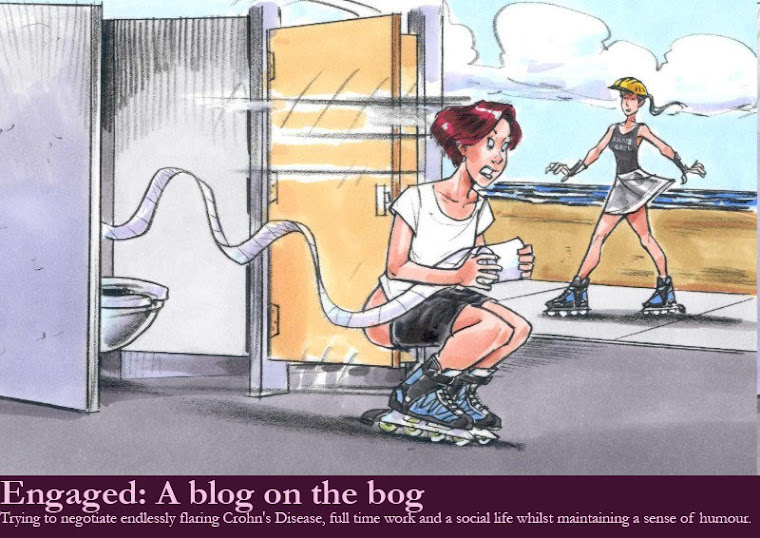The Australian Crohn’s & Colitis Association (ACCA) released a report on the economic costs of Inflammatory Bowel Disease in Australia and the results are quite astounding. Even though the report is almost two years old now, it’s still relevant and makes for an interesting read. Below is the two page summary report, but you can read the full report on the
ACCA website.
From the two page Summary report into the Economic costs of IBD in Australia:
Basic facts about IBD in Australia• Over 61,000 people have IBD (Crohn’s disease or ulcerative colitis) in Australia
• 28,000 people are living with Crohn’s disease, 33,000 with ulcerative colitis
• Around 776 new cases of Crohn’s and 846 new cases of colitis are diagnosed every year
• Crohn’s disease is more common in females, ulcerative colitis is more common in males
• IBD can be diagnosed at any age, with peak onset between 15 to 40
• Prevalence will increase by 20% for Crohn’s disease & 25% for ulcerative colitis by 2020
• IBD accounts for just 0.1% of the total allocated recurrent health expenditure in Australia
Comparisons• In any year IBD is more prevalent that epilepsy, multiple sclerosis, rheumatoid arthritis, eczema and schizophrenia
• The burden of disability for people living with Crohn’s disease or ulcerative colitis is comparable to living with rheumatoid arthritis, severe asthma, or the amputation of an arm
• Disability due to IBD is more severe than living with Type 1 diabetes or epilepsy
Total economic costs of IBD
• The economic cost of IBD in Australia is $2.7 billion, which includes a total financial cost of $500 million and a net cost of lost wellbeing of $2.2 billion
• Loss of productivity accounts for $266.7 million (55% of total financial cost)
• Health system costs are $79.0 million (16%) and carer costs $23.5 million (5%)
• The loss of taxation revenue and government payments total $91.3 million (18%) and out-of-pocket and funeral expenses are $36.2 million (7%)
Areas of greatest financial cost:
• Lost productivity accounts for more than half the $500 million financial cost of IBD.
• The productivity costs of $266.7 million include absenteeism, workplace separation and early retirement and premature death
• The estimated annual costs of absenteeism for people with IBD are $52.3 million ($8.2 million incurred by employees and $44.1 million by employers)
• The annual cost of lost earnings due to workplace separation and early retirement from IBD is $204.2 million
• Premature death accounts for $10.2 million annually
Areas of greatest challenge• Community awareness levels are not high, IBD is often confused with irritable bowel syndrome (IBS)
• Stigma is often associated with IBD, due to the symptoms
• Late diagnosis and inappropriate investigation and management are substantial problems
• The cost of pharmaceuticals can be prohibitive, forcing some patients into surgeries that might otherwise be avoided
• Long-term impacts on employment prospects can lead to inadequate leave entitlements and superannuation
• There is little employment protection against redundancy and demotions and poor information and support for employers and employees
• Currently there is no public funding of community based delivery of support services for people with IBD – ACCA relies on donations, sponsorship and membership fees to provide services
• There is a need for more research into the ‘cause, care and cure’ of IBD. Currently research accounts for just 1.1% of 0.1% of the health budget
Report Recommendations: A National Strategy
• Increase community awareness to help understanding of IBD and reduce stigma
• Improve education programs to assist earlier diagnosis and management
• Provide better access to latest pharmaceuticals including biological therapies
• Improve health services, especially access to IBD specialists and public sector treatment
• Workplace education programs to help keep people at work and counter discrimination
• Greater support services for people with IBD, their family and carers
• More funding for research and development to further investigate the epidemiological observation that the incidence of IBD is increasing
About ACCA
• The Australian Crohn’s and Colitis Association is the peak body representing people with inflammatory bowel disease in Australia
• ACCA’s mission is to support the Crohn’s and Colitis community with a focus on confidential support programs including education, advocacy, counselling, increasing awareness and generating and utilising funds for research and support
• ACCA’s Information Line receives more than 1000 calls a year
• Around 2000 people attend ACCA IBD Forums around Australia ever year
• ACCA is a registered not for profit national organisation funded entirely through membership fees, donations and fundraising activities.
• ACCA does not currently receive financial support from either the state or federal governments
• Donations are tax deductible
• For more information about ACCA visit
http://www.acca.net.au/ or call 1800 138 029





